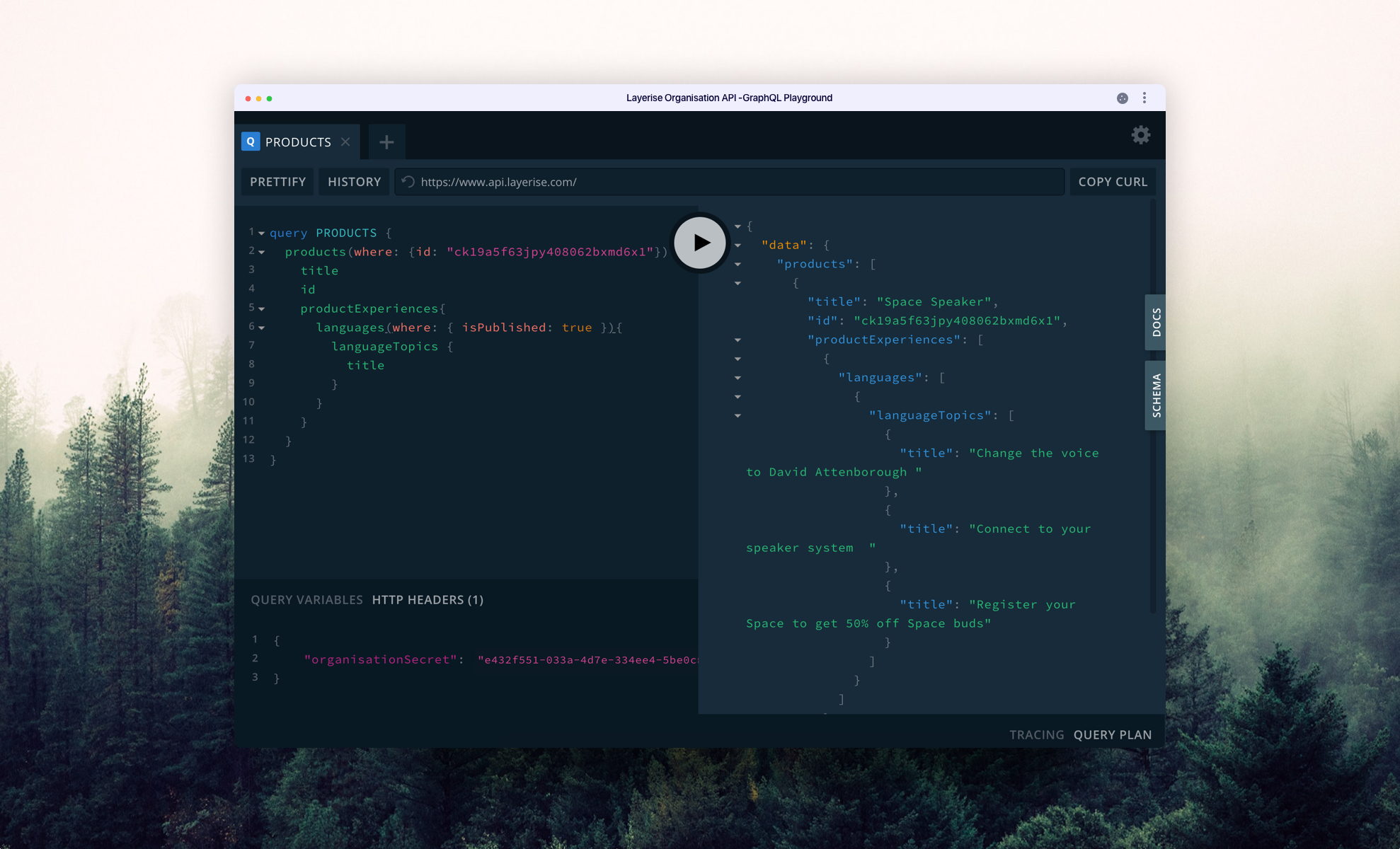
At Layerise, we are strong believers in continuous development. It is our goal to add new features and enhancements to our services constantly. We also focus on helping developers and customers with data portability solutions with APIs. To ensure that our APIs reflect this focus we are today releasing a GraphQL structured Organisation API.
Layerise Organisation API
The Organisation API enables you to access organisation data and build amazing experiences fast and with scale. Using the API is easy and made available programmatically via. GraphQL.
What is GraphQL?
REST and GraphQL are two ways to transmit data over HTTP. The REST-based approach is the traditional way of doing so and has gained a very high adoption rate in many application stacks in the last years. On the other hand, GraphQL is a completely new approach to API services. It can overcome major shortcomings of the traditional REST protocol. Moreover, GraphQL is a query language for APIs and a runtime for fulfilling those queries with your data. GraphQL provides a complete and understandable description of the data in your API, gives clients the power to ask for exactly what they need and nothing more. GraphQL is easy, powerful and very future safe.
GraphQL vs REST
GraphQL introduces major enhancements that make a big impact on the developer experience when building solutions and consuming APIs. An overview between the difference of GraphQL and REST.
In a single request, GraphQL can traverse from the initial query to any related data, following simple schema relationships. While using REST, you have to call multiple and individual endpoints to fetch the same data. With GraphQL there is no over-fetching and under-fetching.
With GraphQL the fields on the Query type and the fields on any other type are equally as powerful. This first-class concept of a nested URL does not exist in REST.
With traditional practice, each call with REST usually provides one route handler function. In contrast, GraphQL can with one query call many resolvers and return a nested response with multiple data sources.
API usage examples
There are no creative limits to what you can build with the Layerise Organisation API. As your data is fully available as resources you can easily and with great speed and flexibility build large and small services.
Here are two examples of website widgets (Rich and Standard) showing data directly from a Product Assistant. Interacting with the widgets will direct a consumer to the Product Assistant. As a result, the two provided examples increase easiness for consumers to locate Product Assistant and at the same time enrich the website with Assistant data.
Rich
This widget fetches product data with a single API call. This call returns all necessary product identification data and at the same time provides prioritised content based on publishing date.

Standard
Equally to the Rich widget, the Standard widget is built on a single API call return. However, it does not show any content but works as a link directly to the Product Assistant upon interaction from the customer.

For more information and in-depth guide for API utilisation please visit our API documentation page.
Learn how to collect valuable insights on your customers to sell even more.

How to Turn a New Obligation into a Growth with Layerise

A trusted, brand-safe AI assistant that knows your products, your customers and your content.


